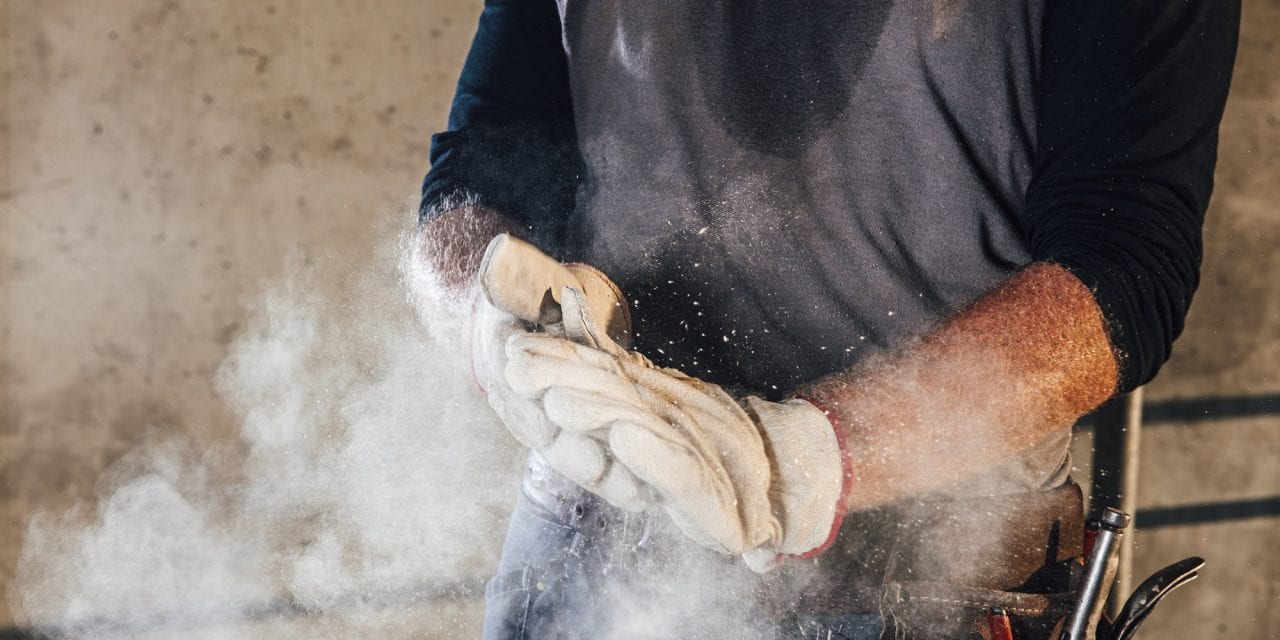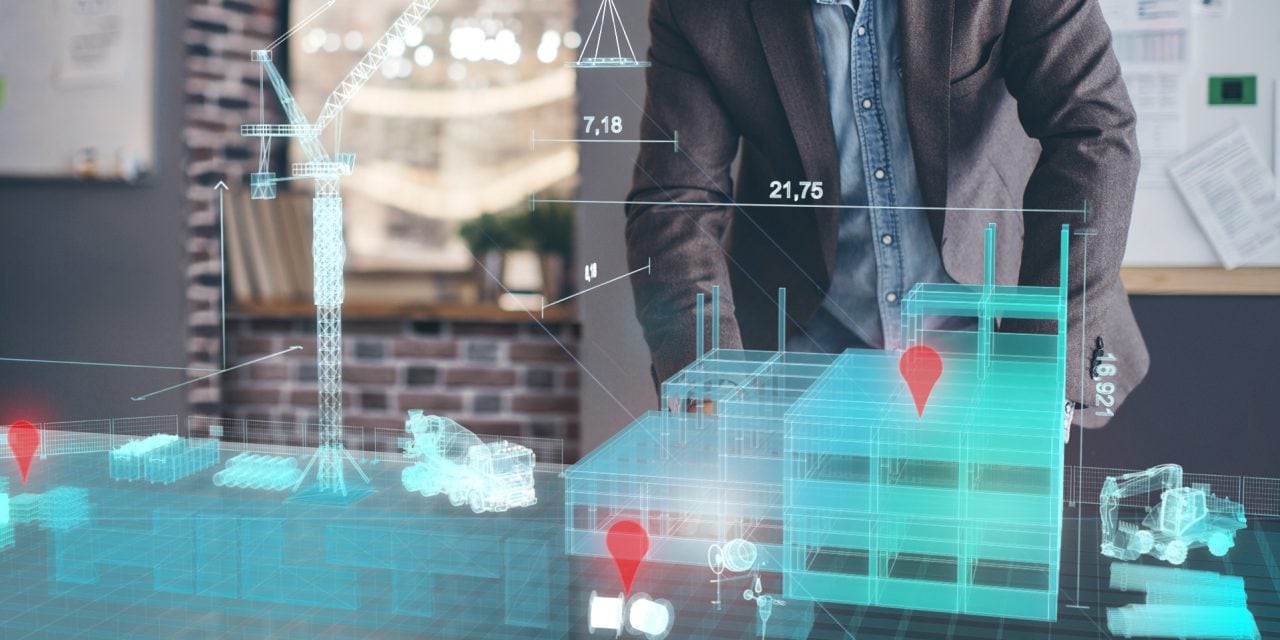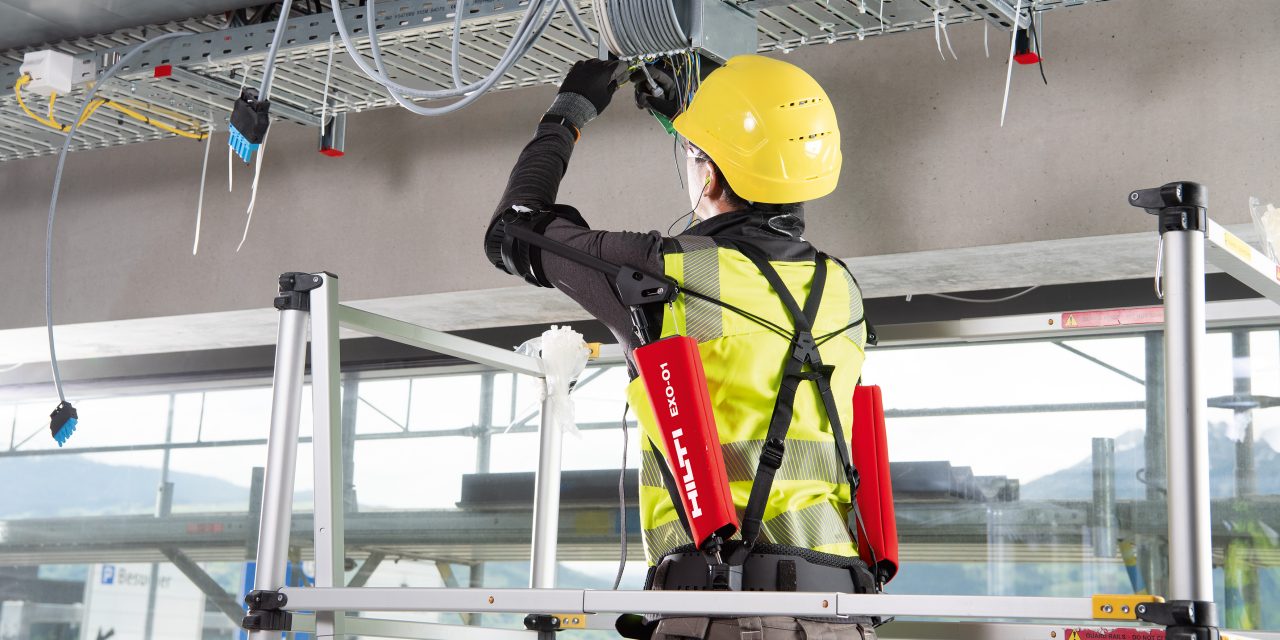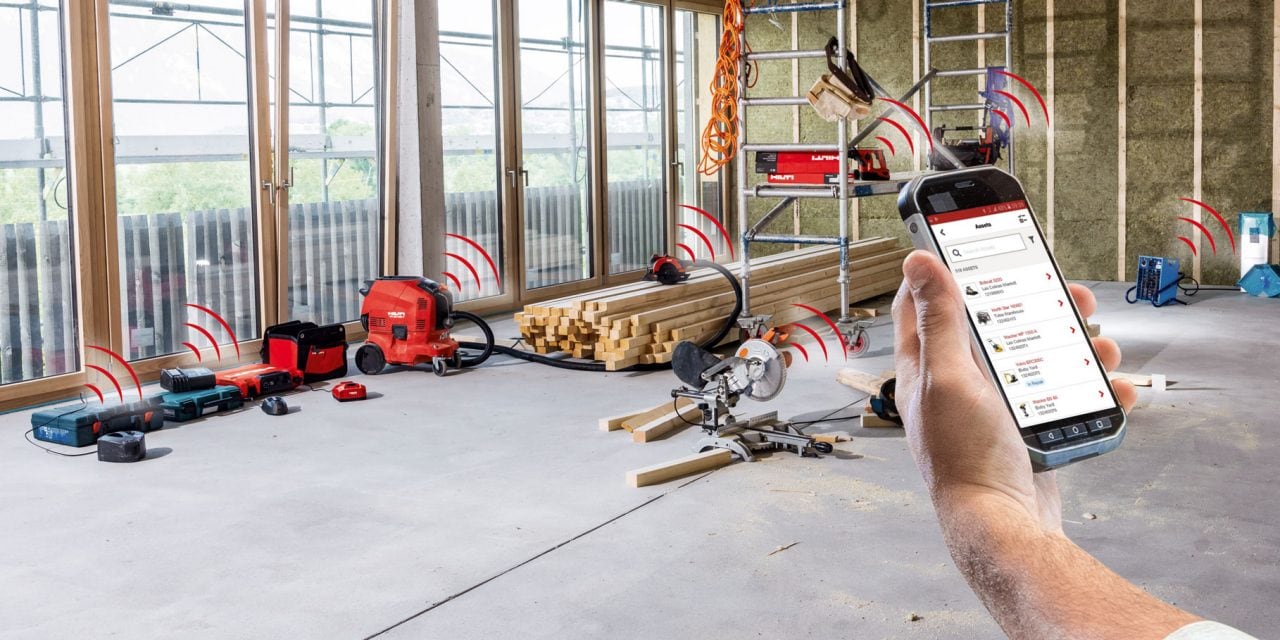- Home
- Solutions
- News and Events
- Hilti Blog
- 7 Construction Industry Trends for 2021
7 Construction Industry Trends for 2021
What will 2021 bring for the construction industry?
What a year it's been... 2020 has thrown us some curve balls but we don’t need to tell you! We’ve seen some unprecedented challenges, but there’s also been plenty of great things we can reflect on and celebrate. This year we’ve seen first-hand how reactive businesses have been and the construction industries overall resilience. It’s also been a year of great innovation and successes.
The end of year is an apt marker to pause and look at what we’ve achieved, and what’s to come. Most importantly, to think about how we can continue working to keep on building the future of construction, together.
Fire protection
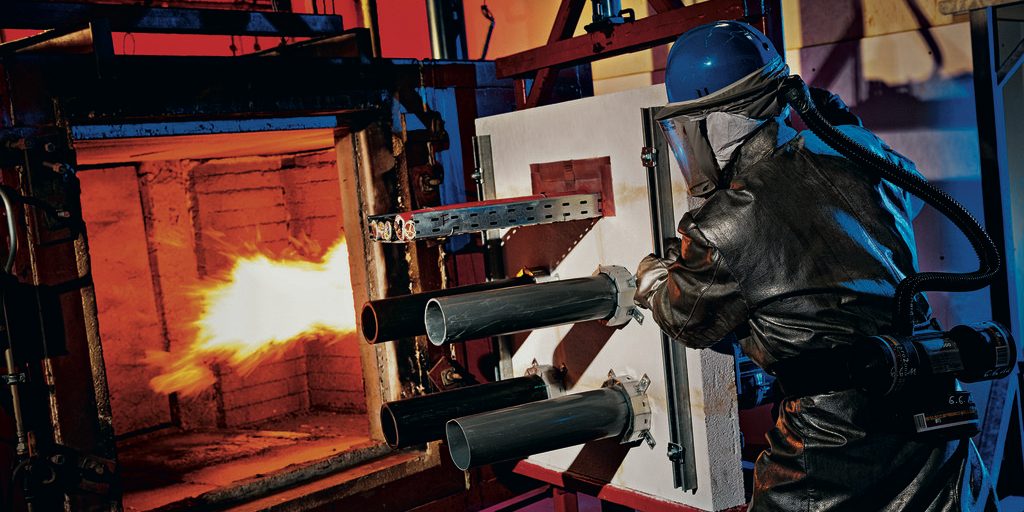
Post-Grenfell Fire Protection remains top of mind
This year, fire protection remains an important topic alongside the ongoing inquiry into the Grenfell tower fire.
Across all stages of the construction process from design to implementation, fire safety is one of the key things to bear in mind. By taking the right steps to ensure buildings have the correct fire protection fittings, not only are you protecting buildings from disaster but saving lives. In the wake of the Grenfell Tower fire, important questions are continuing to be raised when it comes to suitable fire protection. This tragic event brought disastrous effects upon the residents and prompted many businesses to assess how they integrate fire protection in their processes correctly.
This also prompted the Government to take further action on fire safety regulation including drafting the Fire Safety Bill, with further legislation to follow next year. The Bill will bring important implications for all professionals in the chain including expanded duties, bigger responsibilities and with that, the competence required to carry them out.
This could mean a shortage in labour and competence to execute the changes within the construction industry. The good news here is that we can support and help businesses tackle these issues through innovation and designing out the complexity within the processes. With over 30 years of experience in providing internationally approved and tested firestop systems, we’re no strangers to fire protection at Hilti. Our easy-to-use firestop products speed up installation and simplify inspection. We can support customers in the following applications : façade, electrical, mechanical & plumbing, construction joints.
Dust management
It’s time to act on dust: taking steps to create safer working environments
Dust is one of the biggest health and safety concerns the construction industry is facing and exposure poses a significant risk to both workers and employers. Dust is created throughout the construction process and Respirable Crystalline Silica (RCS) dust, generated through the abrasive treatment of silica containing material like concrete is especially dangerous to those who are regularly exposed to it.
Earlier this year, we saw the reclassification of RCS dust as a carcinogen in a watershed moment for the construction industry. The growing momentum within the industry to act on dust is evident alongside the alarming statistics from HSE showing that occupational lung diseases account for around 12,000 deaths estimated to be linked to past exposures at work. There are further estimates from HSE that dust is the cause of death for over 500 construction workers.
This year has presented challenges especially for safer working and getting projects back up and running in line with new government guidelines. Many of our dust solutions available support Covid-19 working regulations such as physical distancing, reducing the number of people needed to carry out jobs, tool maintenance and hygiene. Not only this, but the solutions available can help reduce dust exposure while assisting with workplace management and productivity businesses get back on track after downtime earlier in the year.
We recently took part in an industry webinar alongside leading experts evaluating the current issues surrounding dust exposure which you can view below. Into 2021 and beyond, we want to continue the conversation, and most importantly, continue providing the construction industry with the latest innovations for controlling dust.
Building Information Modelling
BIM has been helping to keep jobsites going amid the pandemic and beyond
This year, we’ve all been faced with several disruptions to our daily working lives across industries, and construction is no stranger to this. Social distancing and reducing numbers on jobsites as projects get back up and running has been a part of shaping the ‘new normal’ we find ourselves in. Digital technologies such as BIM (Building Information Modelling) are enabling companies to better adapt to these changes where digital adoption is possible.
The World Economic Forum has recently praised BIM for transforming construction projects through digital technology alongside the challenges faced this year. BIM has allowed projects to keep going alongside restrictions such as the increased need to work remotely, from multiple locations. With BIM, workers and teams across the construction process can input and access data from all locations, at all times, which supports safer working. This data creates a ‘digital twin’ of the jobsite, providing a single source of reference for projects no matter where you are working from.
Tools that integrate with BIM such as advanced digital layout tools like the PLT 300 can also transform two-person operations into a simple, one-person job that supports current working guidelines.
Next year holds exciting things for our BIM services including a prefabrication service which will help drive productivity, reduce material wastage and ensure quality and accuracy across projects. Keep an eye on our channels for more on this in 2021.
Want to know more about how BIM can support your end-to-end construction workflow?
Robotics in Construction
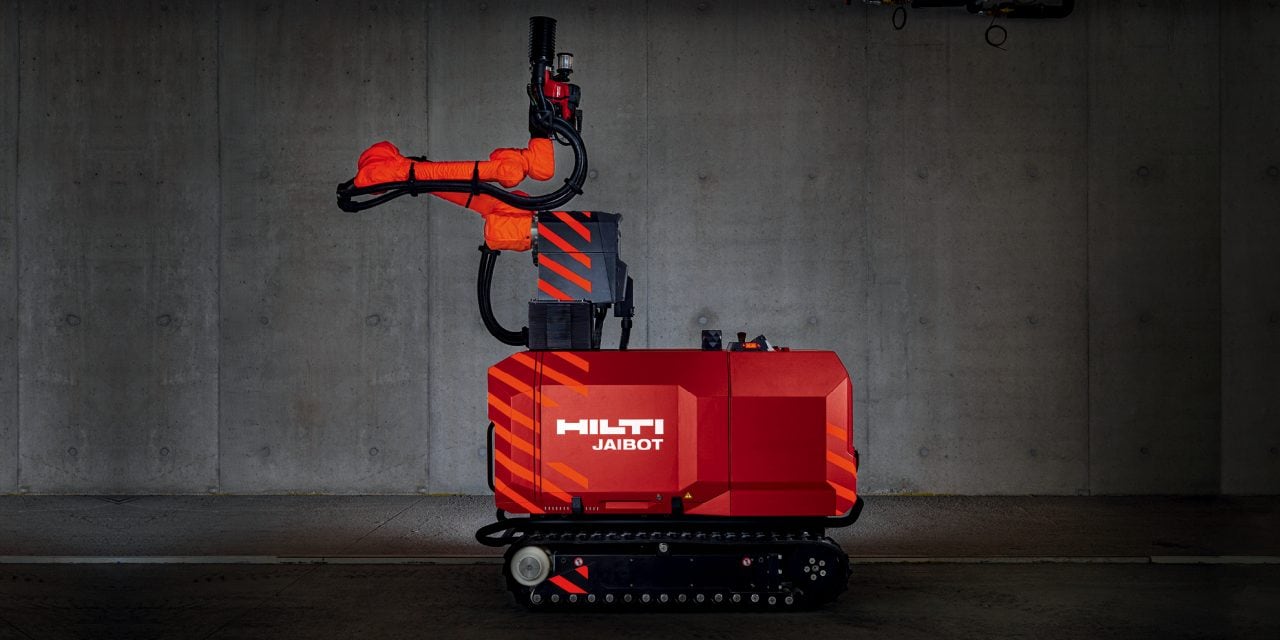
Introducing the Hilti Jaibot
The Hilti Jaibot, the semi-autonomous drilling robot, launched this year. Construction robots can support workers by enhancing health and safety and boosting productivity – carrying out tasks with far greater accuracy and with less room for human error that can occur. Supporting with overhead ceiling installations, this drilling robot can help installation teams carry out repetitive work, reducing risk while maximising on speed and accuracy.
What’s more, the Jaibot integrates with BIM systems: using data from the single source of reference in the BIM model, the Jaibot can use the plan of drill holes, for example, and drill according to the data provided. With a built-in dust removal and marking system, the robot also supports health and safety concerns by carrying out tasks virtually dust-free.
Human Augmentation
Exoskeletons supporting overhead working
This year we’re excited to announce a fantastic innovation: the Hilti EXO-O1. Designed in partnership with the medical technology company Ottobock, the EXO-O1 is a wearable exoskeleton designed for working on overhead applications. The exoskeleton supports health and safety concerns associated with musculoskeletal disorders as well as addressing challenges in labour shortage and diversity within the industry.
The figures associated with musculoskeletal disorders are concerning, with the HSE reporting in recent statistics that there are 152,000 construction workers suffering from anew case of work-related musculoskeletal disorder in 2019/20, with 44% affected in the upper limbs or neck. Wearing the lightweight exoskeleton on the job reduces the strain on joints and reduces the risks related to working on overhead applications.
Cordless power tools
The Cordless revolution is here! Are you ready?
There has been a growing demand for cordless tools in recent years thanks to innovation in battery technology and improved efficiency in brushless motor performance. The lasting power and performance mean that cordless tools are rivalling their corded counterparts and are beginning to be the first choice for many workers.
Safer working, freedom of movement around jobsites, compact size and ergonomics mean that you can work in those tight spaces more comfortably, and by alternating different batteries, you can charge while working. This eliminates the need for any unnecessary downtime.
There are cordless solutions for all jobsite applications; from sawing and cutting, to grinding and drilling. We’ve seen exciting developments in our cordless portfolio this year including additions to our metal working portfolio; the GDG 6-22A Die Grinder, SPN 6-A22 Nibbler, and SSH 6M-A22 Shearer. These have been followed by the extremely popular SFE 2-A12 and the SF 4-A22 drill drivers.
All our cordless tools are designed with you in mind. Improved ergonomics allow for more comfortable handling, helping to reduce fatigue during those tough jobs. They also help increase productivity with better accuracy and precision, battery reach and easy to exchange inserts to speed up valuable time between applications. Our new cordless tools are also extremely versatile. Depending on the tool and application, our cordless portfolio help you tackle a variety of material types and work in those hard-to-reach areas.
Are you ready to unplug and go cordless? Check out our cordless range below.
Ways to reduce construction delays
Digitalisation is helping to boost productivity and create efficiencies
This year, the coronavirus pandemic has left no stone unturned when it comes to its far-reaching impact. The construction industry has been no stranger to this with the unscheduled closures of jobsites, supply chain issues projects put on hold, and managing the new guidelines coming into place.
Getting jobsites and projects back up and running, boosting productivity and creating efficiencies has been a key focus. The good news is, many businesses are incorporating digitalisation into their processes to do this. In fact, we’ve previously drawn on statistics from a recent survey suggesting that 66% of companies have adopted new digital solutions during this years’ lockdown with a further 94% reporting direct improvements to working following the introduction.
The even better news is that digitalisation doesn’t have to be a huge undertaking on your part, there are several approaches you can take to start incorporating digitalisation into your business. Here at Hilti, we understand that it’s not a one-size-fits-all and we can support you in using digital services to complement your current processes.
Our ON!Track asset management software is a great place to start, allowing you to keep track of what tools, consumables and equipment you have, where they are and who is using them. A new iteration of ON!Track is launching in 2021 with ON!Track 3.0, offering even more sophisticated features to improve tool park productivity and efficiency. Keep your eyes on our channels for more updates into the new year!
With 2021 on the horizon, we can’t wait to see all the new product innovations and services coming that will help support your business and ways of working well into the new year and beyond.
To keep up with the latest launches from Hilti be sure to check in with our What’s New page regularly.

